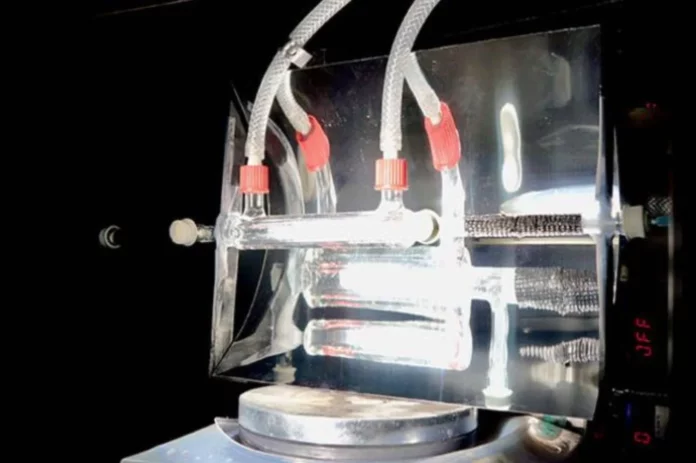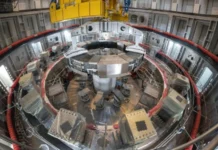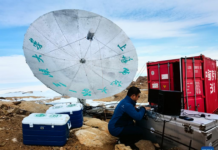Researchers at the University of Cambridge have built a solar-powered reactor that converts atmospheric carbon dioxide (CO2) into a gas that could one day be used to fuel vehicles, power off-grid homes, and even produce pharmaceuticals.
The researchers say they were inspired by photosynthesis and claim that their technology can be scaled more easily than previous solar-powered devices. The team’s research was published today in the journal Nature Energy.
Carbon capture and storage is a possible means of reducing greenhouse gas emissions. The problem is that most carbon capture technologies are themselves powered by the burning of fossil fuels – not to mention that the CO2 captured in the process needs to be stored somewhere, such as deep underground. But the new reactor can solve all these problems.
“What if, instead of pumping carbon dioxide underground, we made something useful out of it?” Sayan Kar, a chemist at the University of Cambridge and first author of the study, said in a university statement. “CO2 is a harmful greenhouse gas, but it can also be converted into useful chemicals without contributing to global warming.”
The new reactor by Kar and his colleagues is entirely solar-powered, meaning it does not require any cables or batteries. According to the researchers, at night, it filters CO2 from the air, much like a sponge absorbs water. During the day, sunlight heats the collected CO2, which absorbs the sun’s infrared radiation, while the semiconductor powder absorbs ultraviolet radiation. A mirror on the reactor concentrates the sunlight for greater system efficiency.
The absorption initiates a chemical reaction in the reactor that converts CO2 into synthesis gas, or syngas, a mixture of carbon monoxide (CO) and hydrogen (H2), which is an important ingredient in the production of many fuels and chemicals. The team is currently researching how to turn this solar syngas into a liquid fuel that could one day power vehicles such as cars and airplanes.
“If we were to produce these devices on a large scale, they could solve two problems at once: remove CO2 from the atmosphere and create an environmentally friendly alternative to fossil fuels,” says Kar. “CO2 is seen as a harmful waste product, but it is also an opportunity.”
The researchers argue that such a solar reactor could even be used by individuals (as opposed to powering an entire neighborhood or city) to provide energy to remote communities. In addition, due to the prevalence of synthesis gas in the production of chemicals, solar synthesis gas could also reduce the carbon footprint of the chemical sector.
“Instead of continuing to extract and burn fossil fuels to produce the products we have come to rely on, we can get all the CO2 we need directly from the air and reuse it,” said Erwin Reisner, a chemist at the University of Cambridge who led the study. “We can build a circular, sustainable economy – if we have the political will to do so.”
Hopefully, we will see solar-powered cars and carbon-capture reactors on the market sooner than we think.









